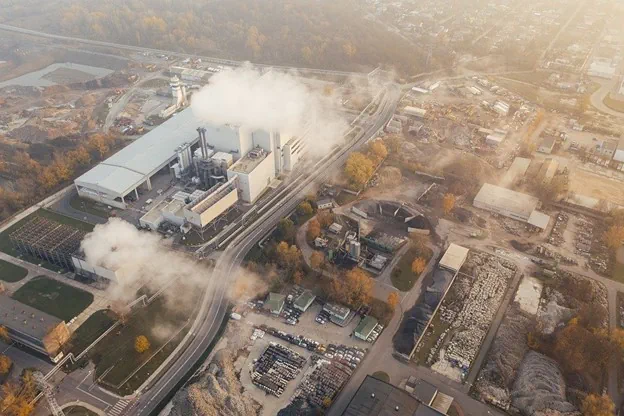
Carbon Dioxide Effects On Humans And The Environment

Table of Contents
Introduction
While carbon dioxide (CO2) is essential for plant and animal survival, too much concentration in the atmosphere can have devastating consequences. CO2 has proven to be a significant contributor to air pollution, taking a substantial role in the greenhouse effect. That’s because carbon dioxide traps radiation at the ground level, resulting in ground-level ozone. That prevents the earth from cooling during the night and warms ocean waters.
What Is Carbon Dioxide?
Co2 is a standard greenhouse gas naturally existing in the atmosphere, accounting for about 75% of emissions in the air we breathe. However, it can live in the atmosphere for thousands of years. Research also shows that the level of carbon dioxide concentration has risen to 355 parts per million (PPM), compared to 270 PPM recorded in the 1700s.
This naturally occurring non-flammable gas ensures that our planet remains hospitable by maintaining atmospheric temperatures, although its gradual increase in the atmosphere is a significant contributor to global warming. That has threatened to disrupt the earth’s climate over the last century, with global temperatures rising gradually.

Excess CO2 Affects both Human and Plant Life Pixabay
Primary Sources of Carbon Dioxide Emissions
While human activities like coal burning, deforestation, and gas consumption contribute to a significant percentage of carbon dioxide concentration in the atmosphere, this greenhouse gas comes from various sources, including:
Decomposition and Respiration
Respiration and decomposition are naturally occurring processes involving the exchange of carbon dioxide and oxygen between animals’ blood and the environment. Respiration occurs at a cellular level, with carbon dioxide released into the atmosphere by animals and plants.
Every living cell must respire to produce the energy needed for survival, in a process commonly known as cellular respiration. This process creates the much-needed energy for organisms’ growth by combining atmospheric oxygen with glucose. However, when glucose and CO2 are brought together, they form energy and carbon. That translates into more carbon dioxide concentration in the air.
Respiration is also the same process by which organic organisms decompose. This process results in both the release of water and carbon dioxide in the air. That’s because the decomposing bacteria breaks down both plants and other living organisms to release Co2 in the atmosphere, where it’s available to green plants for photosynthesis.

Human Activities are Major sources of Atmospheric CO2. Pixabay
Weathering of Carbonate Rocks
With geologic time, limestone becomes exposed to the atmosphere because of rain. That’s because carbonic acid is formed when CO2 dissolves in water. It dissolves carbonate rocks and ads more carbon dioxide into the atmosphere.
Burning Of Forests And Fossils Fuels
Human activities like deforestation, burning coal, gasoline, and gas contribute to at least 87% of the CO2 gas released into the air. During the combustion process, the carbon present in fossil fuel combines atmospheric oxygen to produce water and carbon dioxide. That’s because the naturally occurring hydrocarbon fuels release water and Co2 when burning.
Besides releasing more carbon dioxide into the atmosphere by burning coal and trees, deforestation affects the Co2 levels in the atmosphere in more profound ways. That’s because trees consume atmospheric carbon dioxide levels through photosynthesis. That means the fewer the trees, the more carbon dioxide is left lingering in the atmosphere.

Burning Of Fossil Fuel Releases More Carbon in the Atmosphere. Pixabay
Carbon Dioxide Intensive Industries
According to the United States Environmental Protection Agency (EPA), carbon dioxide is the most significant greenhouse gas emitted through fossil fuel usage and the humans’ impact on forestry. Studies show that human activities contribute to as much as 110.5 million tons of atmospheric CO2 daily. NASA has also noted that human industrial activities have increased atmospheric CO2 levels from 280 to 400 parts per million over the last one and a half centuries.
While many countries acknowledge that climate change is a major issue, most are still struggling to reduce their carbon emissions even after signing the 2016 Paris Agreement. That’s all because of these top five carbon-intensive industries.
Energy Production
Burning fossil fuel to produce energy is the biggest source of Co2 emissions in the atmosphere. According to UNEP (United National Environment Programme), fossil fuels account for three-quarters of human CO2 emissions. However, the energy created from burning fossil fuels is essential for the production of heat, electricity, and power used in manufacturing, construction, homes, and offices.
The main type of fossil fuel involved in energy production includes oil, coal and natural gas. These fossil fuels account for 20%, 43%, and 36% of carbon emissions respectively. In 2017, China experienced an expected surge of carbon emissions because coal-burning after a drought drained most of their rivers and affected their hydropower generation.
Forestry, Agriculture and Other Use of Land
Deforestation, agriculture, livestock rearing, and conversion of forest land contribute to major carbon emissions. However, their impact on carbon emission levels is two-fold. For instance, clearing forests to convert them into agricultural land reduces the number of trees that can significantly reduce the atmosphere’s carbon dioxide. Additionally, animal agriculture releases carbon dioxide and other gasses into the air.
Transport
The transportation sector is another major culprit of carbon emission in the atmosphere. According to a 2010 report, transporting people and goods produces about 22% of carbon emissions by burning fossil fuel. That’s because this sector is energy-intensive and uses petroleum-based fuels like diesel, gasoline, and Kerosene. That explains why transport-related carbon emissions have increased rapidly since the 1990s, growing by 45% over the last two decades.
Road transport accounts for about 72% of the carbon dioxide emissions related to the transport industry, with significant emitters being freight, automobiles, and light-duty trucks. Besides road vehicles, global aviation and marine shipping also contribute to carbon dioxide emissions in the atmosphere. Marine shipping contributes to 14% of carbon dioxide emissions from transport, while global aviation produces about 11%.
Industrial Sector
Industrial processes contribute to about 20% of Co2 emissions related to fossil fuel. These processes include construction, agriculture, mining, lithium extraction, agriculture, and manufacturing. However, manufacturing is the most significant contributor among the four.

Human Activities are Major sources of Atmospheric CO2. Pixabay
How Carbon Dioxide Emissions Affect Our Planet
While Co2 exposure has several benefits to plants and human life, too much carbon dioxide can affect your health negatively. That includes dizziness, headaches, restlessness, difficulty breathing, tiredness, convulsion, elevate blood pressure, and increased heart rate. An increase in the atmospheric carbon dioxide levels can also result in more devastating effects to the environment, including:
Climate Change
The more Co2 is trapped in the atmosphere, the more heat will be trapped in the environment. That contributes to the rise in global temperatures and influences climate change. That results in extreme weather events like wildfires, tropical storms, heat waves, and severe drought, negatively affecting crop production and disrupting the animals’ natural habits.
Cause respiratory diseases to humans
Carbon emissions affect human life directly by causing more respiratory complications due to the increase in air pollution. Even worse, carbon emissions kill some animal species and destroy food, which highly affects humans.
Changes Plant Life
According to the scientists at the University of Washington, carbon dioxide emissions affect plant growth although it’s required for growth. These scientists suggest that too much carbon dioxide in the atmosphere, which results in thick leaves. These thick leaves are not very effective in reducing the atmospheric carbon dioxide levels, which can have catastrophic results.
How We Can Reduce CO2 Emissions in the Atmosphere
According to the 2016 Paris Climate Agreement, governments must work together to limit global warming to remain under 200 degrees Celcius above pre-industrial levels. However, we need to reduce the CO2 emissions and remove more carbon from the atmosphere for that to happen. Many climate control models show that we need to remove or store billions of metric tons of CO2 by 2050 while reducing our carbon footprint.
Removing carbon from the atmosphere can take various efforts ranging from land management efforts to using new technologies. However, whether these climate control models can remove carbon dioxide from the atmosphere at the required scale in the coming decades is yet to be seen. These efforts include:
More Forests
Besides naturally removing CO2 from the air through photosynthesis, trees also store the carbon removed from the atmosphere. As such, restoring, expanding, and managing forests allows us to leverage the power of photosynthesis for climate control.
Farms Are A Powerful Tool
Soil can naturally store carbon, although agricultural soil is running low because of intensive use. Since agricultural land is very expansive, even a small increase in the amount of carbon stored in the ground per acre can be impactful. Soil carbon is also beneficial to ranchers and farmers as it increases crop yields and soil health. Fortunately, there are many ways to increase soil carbon, including planting trees and using compost when farming. However, managing soil carbon on a large scale can be tricky.
Direct Air Capture
Direct air capture involves chemically scrapping off CO2 from ambient air and storing it in long-lived products. This technology is similar to the technology used to capture emissions from industrial facilities and power plants. However, the direct air capture method removes the exce4ss carbon directly from the atmosphere.
Conclusion
While carbon dioxide is essential for plant growth and food production, excess CO2 emissions in the atmosphere can cause health complications, habitat destruction, and dramatic climate change. As such, we all have a responsibility to reduce our carbon dioxide emissions, even as governments strive to remove excess CO2 from the air.